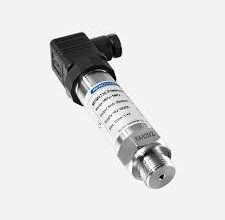How to Fix a Generator Starting Coil

Generators play an important role in providing electricity to homes and businesses during power outages. It’s crucial to ensure they are working properly at all times, especially when they are needed the most. A common issue with generators is a faulty starting coil, which can prevent the generator from starting. This can be a frustrating and stressful experience, especially if you are in the middle of a power outage. Fortunately, fixing a starting coil is a task that you can do yourself with a few basic tools and some basic knowledge.
Understanding the Starting Coil
The starting coil, also known as the ignition coil, is an important component of the generator. It acts as the source of high voltage for the spark plug, which is responsible for igniting the fuel in the generator’s engine. If the starting coil is faulty, it will not be able to provide the necessary voltage to ignite the fuel, and the generator will not start.
Symptoms of a Faulty Starting Coil
There are a few telltale signs that your generator’s starting coil may be faulty. These include:
Engine cranks but does not start
Engine struggles to start
Engine misfires
Engine runs poorly
If you are experiencing any of these symptoms, it’s possible that your generator’s starting coil is at fault.
Tools Needed
Before you begin, you will need a few basic tools to complete this task. These include:
A screwdriver
A wrench
A multimeter
Checking the Starting Coil
To determine if the starting coil is faulty, you will need to check its resistance using a multimeter. To do this, follow these steps:
Locate the starting coil, which is typically found near the generator’s engine.
Disconnect the wires from the starting coil.
Set your multimeter to the ohms setting.
Touch the multimeter probes to the terminals on the starting coil.
Record the resistance reading.
The resistance reading should be within the specifications listed in
the generator’s manual. If the resistance reading is outside of the specifications, it’s likely that the starting coil is faulty and needs to be replaced.
Replacing the Starting Coil
If the resistance reading indicates that the starting coil is faulty, you will need to replace it. To do this, follow these steps:
Locate the starting coil and disconnect the wires.
Use a wrench to remove the bolts that hold the starting coil in place.
Remove the faulty starting coil and replace it with a new one.
Reattach the wires to the new starting coil.
Use a screwdriver to tighten the bolts that hold the starting coil in place.
Final Thoughts
Fixing a faulty starting coil is a task that you can do yourself with a few basic tools and some basic knowledge. By checking the resistance reading and replacing the starting coil if necessary, you can ensure that your generator is working properly and ready to provide power during an outage. With this guide, you can fix a generator starting coil quickly and easily, saving you time, money, and frustration.
Having a generator can provide peace of mind during power outages and ensure that you have power when you need it. However, like any mechanical device, generators can develop issues, including a faulty starting coil.
Maintaining the Starting Coil
To prevent future issues with the starting coil, it’s important to maintain your generator regularly. This includes:
monitoring the oil level frequently and adding oil as necessary
regularly replacing the oil and oil filter
examining and changing the air filter as necessary
replacing the spark plug if necessary after inspecting it
By maintaining your generator, you can extend its lifespan and ensure that it is ready to provide power when you need it.
prevent your generator from starting and providing power during an outage. However, by checking the resistance reading
Common Mistakes to Avoid
When fixing a faulty starting coil, it’s important to avoid common mistakes that can lead to further issues or even damage to the generator. These include:
Not disconnecting the wires from the starting coil before checking its resistance
Not using the correct tools for the job
Not checking the specifications for the starting coil before replacing it
Not properly tightening the bolts that hold the starting coil in place
By avoiding these mistakes, you can ensure that the repair process goes smoothly and that your generator is working properly after the repair.
necessary, you can fix the issue and get your generator back up and running. With regular maintenance and by avoiding common mistakes,
you can also prevent future issues with the starting coil and ensure that your generator is always ready to provide power when you need it
Whether you’re a seasoned DIY enthusiast or a novice, fixing a generator starting coil is a task that can be done quickly and easily with the right information and tools. By following this guide, you can get your generator back up and running and ensure that you have power when you need it.
conclusion
In conclusion, fixing a faulty generator starting coil is a task that can be done by anyone with basic knowledge and a few simple tools. By following the steps outlined in this guide, you can check the resistance reading, replace the starting coil if necessary, and maintain your generator to prevent future issues. Regular maintenance and avoiding common mistakes are key to ensuring that your generator is always ready to provide power during an outage. With this information, you can confidently fix a generator starting coil and ensure that you have power when you need it.




